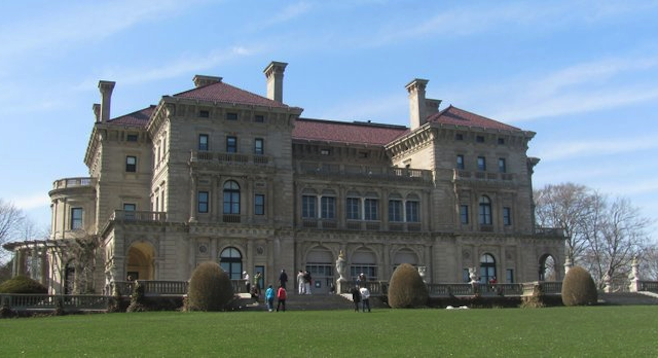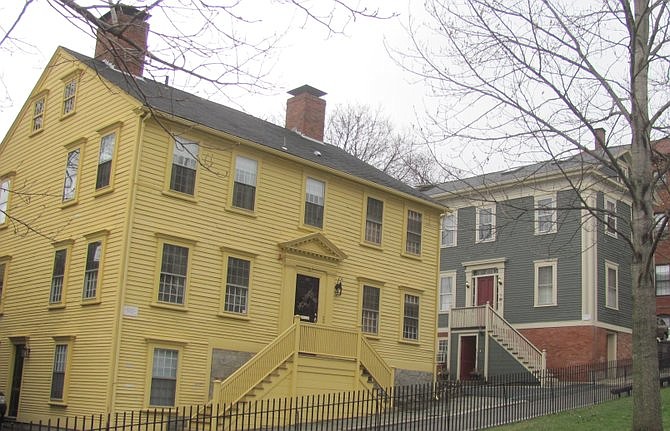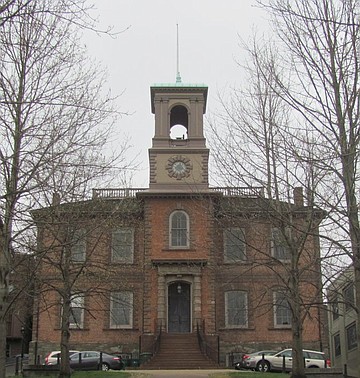 Facebook
Facebook
 X
X
 Instagram
Instagram
 TikTok
TikTok
 Youtube
Youtube

Rhode Island is America’s smallest state by area and its eighth-least populated. Despite this, it’s one of America’s most historic states, having been settled in 1636.
Rhode Island was established as a colony by Roger Williams, a religious dissenter, who was banished from the nearby Massachusetts Bay Colony. He went on to establish both the colony and its modern capital, Providence. The colony was founded on a belief in religious freedom that made Rhode Island a haven for many otherwise unwelcome religious groups, including the first Jewish congregations in the U.S.

Rhode Island – particularly its capital, Providence – is experiencing a bit of a renaissance after economic mismanagement and high crime rates during the '70s and '80s. With the economic recovery and a much lower crime rate, there's no better time to visit one of America’s most historic states.
Providence
Providence was founded in 1636 by Roger Williams as the capital city of his colony. Any visitor wanting to understand this early history should make a stop at the Roger Williams National Memorial. From here it’s an easy walk to Providence’s main historic sights.

Not to be missed are the Old State House (left) and the First Baptist Church, the first Baptist church in America. For art lovers, be sure not to miss the Rhode Island School of Design Art Museum, Rhode Island’s premiere art museum.
A few miles south of downtown in Roger Williams Park are a couple other sights worth visiting. The Providence zoo is open year-round and has a nice manageable collection of animals in naturalistic settings. Although in need of an update, the Museum of Natural History has an interesting and eclectic collection of artifacts of anthropology and natural history.
Newport
Established shortly after Providence in 1639, Newport soon came to eclipse Providence in importance as a major colonial seaport. Its economy was destroyed, however, by the British blockade during the American Revolution, and Newport became a quiet backwater for over a hundred years.
In the late 1800s Newport was rediscovered by the burgeoning New York rich of the Gilded Age. Families such as the Vanderbilts and Astors rushed to build huge estates on the island to use as summer homes. Most of these homes today have been turned into museums that allow the visitor to get a taste of the opulence of the age.
Of the 10 or so open to visitors, the grandest is Cornelius Vanderbilt’s five-story, 65,000-square-foot mansion, named The Breakers. Set on a dramatic cliff overlooking the Atlantic, it represents the pinnacle archetype for Newport mansions.
In addition to the Breakers, The Elms and Marble House are also must-sees. For a view of the mansions from a different perspective along with a feel for Newport’s majestic coastline, I highly recommend the 3½-mile Cliff Walk.

Once you've had your fill of mega-mansions, head to Newport’s downtown for a walking tour of the colonial heart of Newport. Start at Washington Square for a view of the appropriately Colonial-era Colony House. Two blocks southeast on Touro Street is the Touro Synagogue, America’s oldest synagogue. Continue on for six blocks to the Redwood Athenaeum, the oldest continuously operating library in the U.S.
Bottom Line
Rhode Island has had an influence way beyond proportion to its diminutive size: as one of the original colonies, it witnessed and shaped much of American history.
The state offers many sights for any traveler interested in that history – including its crown jewel, Newport. Surely Newport should be on the bucket list of any serious traveler.


Rhode Island is America’s smallest state by area and its eighth-least populated. Despite this, it’s one of America’s most historic states, having been settled in 1636.
Rhode Island was established as a colony by Roger Williams, a religious dissenter, who was banished from the nearby Massachusetts Bay Colony. He went on to establish both the colony and its modern capital, Providence. The colony was founded on a belief in religious freedom that made Rhode Island a haven for many otherwise unwelcome religious groups, including the first Jewish congregations in the U.S.

Rhode Island – particularly its capital, Providence – is experiencing a bit of a renaissance after economic mismanagement and high crime rates during the '70s and '80s. With the economic recovery and a much lower crime rate, there's no better time to visit one of America’s most historic states.
Providence
Providence was founded in 1636 by Roger Williams as the capital city of his colony. Any visitor wanting to understand this early history should make a stop at the Roger Williams National Memorial. From here it’s an easy walk to Providence’s main historic sights.

Not to be missed are the Old State House (left) and the First Baptist Church, the first Baptist church in America. For art lovers, be sure not to miss the Rhode Island School of Design Art Museum, Rhode Island’s premiere art museum.
A few miles south of downtown in Roger Williams Park are a couple other sights worth visiting. The Providence zoo is open year-round and has a nice manageable collection of animals in naturalistic settings. Although in need of an update, the Museum of Natural History has an interesting and eclectic collection of artifacts of anthropology and natural history.
Newport
Established shortly after Providence in 1639, Newport soon came to eclipse Providence in importance as a major colonial seaport. Its economy was destroyed, however, by the British blockade during the American Revolution, and Newport became a quiet backwater for over a hundred years.
In the late 1800s Newport was rediscovered by the burgeoning New York rich of the Gilded Age. Families such as the Vanderbilts and Astors rushed to build huge estates on the island to use as summer homes. Most of these homes today have been turned into museums that allow the visitor to get a taste of the opulence of the age.
Of the 10 or so open to visitors, the grandest is Cornelius Vanderbilt’s five-story, 65,000-square-foot mansion, named The Breakers. Set on a dramatic cliff overlooking the Atlantic, it represents the pinnacle archetype for Newport mansions.
In addition to the Breakers, The Elms and Marble House are also must-sees. For a view of the mansions from a different perspective along with a feel for Newport’s majestic coastline, I highly recommend the 3½-mile Cliff Walk.

Once you've had your fill of mega-mansions, head to Newport’s downtown for a walking tour of the colonial heart of Newport. Start at Washington Square for a view of the appropriately Colonial-era Colony House. Two blocks southeast on Touro Street is the Touro Synagogue, America’s oldest synagogue. Continue on for six blocks to the Redwood Athenaeum, the oldest continuously operating library in the U.S.
Bottom Line
Rhode Island has had an influence way beyond proportion to its diminutive size: as one of the original colonies, it witnessed and shaped much of American history.
The state offers many sights for any traveler interested in that history – including its crown jewel, Newport. Surely Newport should be on the bucket list of any serious traveler.
Comments